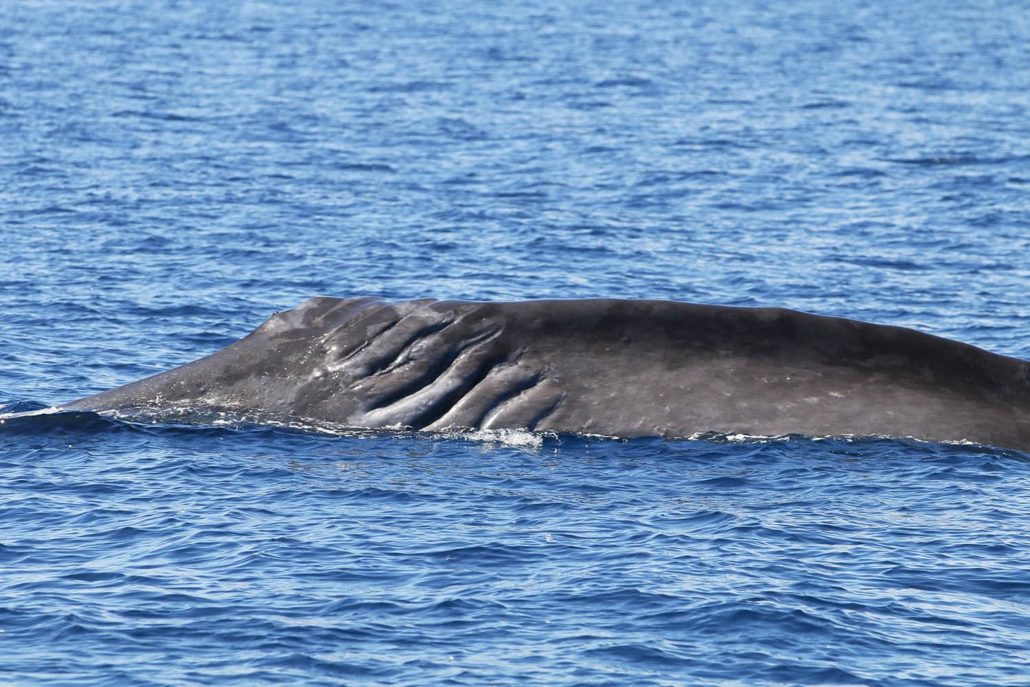Propeller, the whale with scars, is back
There is one fin whale (Balaenoptera physalus) that holds a special place in our hearts: her name is “Propeller,” easily recognizable by the prominent scar on her back from which she derives her name. We have known her since 1998, and her story is emblematic: the deep marks she bears can only be attributed to a ship’s propeller, which almost certainly struck the animal years ago.
The issue of collisions with large, increasingly numerous, and fast ships is one of the most severe threats to the survival of large marine mammals in the Mediterranean Sea. Unlike many others, Propeller was lucky and survived. Last year, she was spotted by the boat of Golfo Paradiso Whale Watching in Imperia, accompanied by a calf—a rather rare sighting in our study area.
To the trained eye of the biologists aboard the research boat “Pelagos,” Propeller appeared quite thin; although we cannot rule out any possibilities, we hope this does not indicate she is unwell, but merely that we are at the beginning of the foraging season. Indeed, fin whales come to the Pelagos Sanctuary in the summer, the vast marine protected area that includes the Ligurian Sea, precisely to feast on krill after, presumably, a period of reduced feeding.
It is here, in the heart of the Pelagos Sanctuary for marine mammals, that the Cetacean Sanctuary Research (CSR) study area is located. Due to its particular richness, especially of whales and dolphins, the Sanctuary is a true “hot spot” of the Mediterranean. Tethys’ CSR project is one of the longest-running research projects of its kind. Based in Portosole Sanremo since 1990, we have been collecting scientific data with one aim: to know and protect whales and dolphins and their environment.










